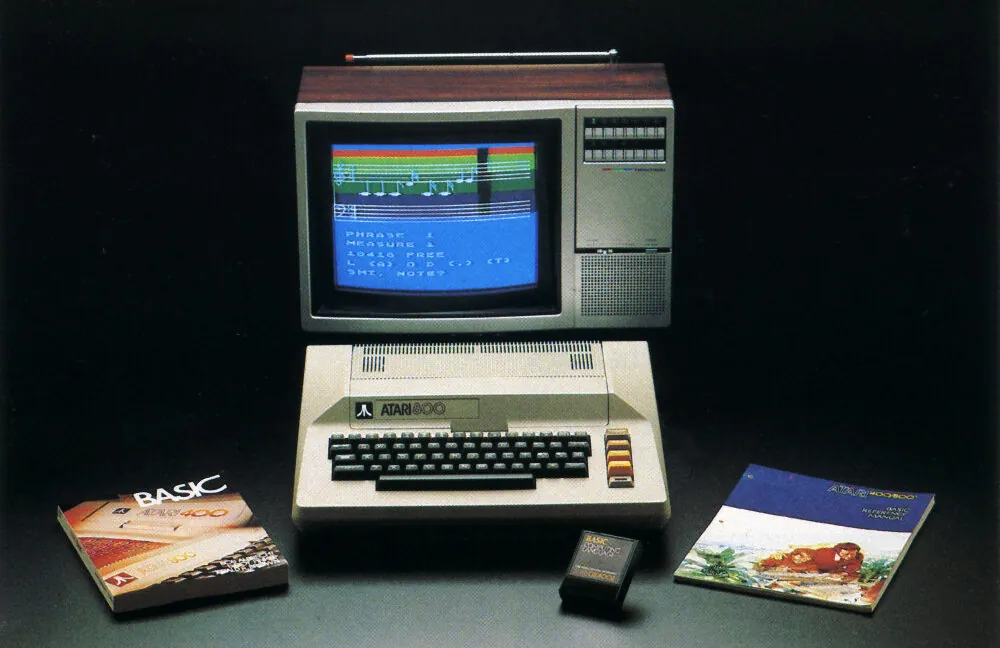Polish engineer Piotr “Osa” Ostapowicz recently unveiled “Atarino,” which may be the world’s smallest 8-bit Atari computer re-creation, according to retro computing site Atariteca.
The European Atari connection The Atari 8-bit platform holds particular significance in Poland and Europe in general, where these computers performed well on the home market throughout the 1980s and into the 1990s.
This nostalgic connection has made Poland a global hub for Atari 8-bit development and preservation.
Despite COCOM embargoes on Western technology, Atari computers became generally available at these stores, partly thanks to efforts by Jack Tramiel, the Polish-born Atari owner who ensured his computers reached his homeland.
This nostalgic connection has made Poland a global hub for Atari 8-bit development and preservation.
The Atari 400 and 800, ground-breaking home computers with four joystick ports, custom graphics and sound chips, and the capacity to run the most sophisticated home video games of their time, were released by Atari in 1979. These devices, which retailed for $549 and $999, respectively, were revolutionary in terms of consumer-friendly personal computing because of their serial I/O bus, which foreshadowed USB, and modular design. A hobbyist has now, forty-six years later, reduced the system hardware to a size that would have appeared to be science fiction in the 1970s.
According to retro computing website Atariteca, Polish engineer Piotr “Osa” Ostapowicz recently unveiled “Atarino,” which might be the smallest 8-bit Atari computer recreation in the world. The processor, graphics chips, memory controllers, and sound hardware are all contained on a module that is only 2×1.5 centimeters (or roughly 0.79×0.59 inches) in size, about the size of a postage stamp.
Ostapowicz’s invention uses contemporary FPGA (field-programmable gate array) technology to reimplement the vintage Atari XL/XE architecture. Atarino replicates the original Atari components accurately at the logic level, enabling it to run vintage software while preserving compatibility with original peripherals, in contrast to software emulators that mimic outdated hardware (and contemporary recreations that run them, such as the Atari 400 Mini console) on a full computer system of a different architecture.
In a January 2024 YouTube interview, Ostapowicz told Atari Online PL, “The current project is not strictly a clone of Atari but basically, well, I’m forming a machine that is compatible with the Atari 8-bit computer itself, but it was created on the basis of the framework that I created some time ago.”.
The project started more than ten years ago and was first shown in public in December 2023. It consists of a single Lattice UP5K FPGA chip with memory controllers, ANTIC and GTIA graphics chips, a 6502C processor, and a POKEY sound chip. Despite its small size, the system can operate at clock speeds of up to 31 MHz, which is significantly faster than the 1 MHz 79 MHz of the original hardware.
smaller, quicker, and better suited for upcoming tasks.
Ostapowicz claims that he has improved the original design in a number of ways, even though Atarino still has wide compatibility with vintage Atari software. For instance, the 6502 processor core adds new instructions while adhering to the physical chip specifications. Performance is improved by the memory system’s use of independent channels as opposed to the original’s “cycle stealing” strategy, in which the graphics chip momentarily stops the CPU to access memory.
Additionally, the Atarino’s graphics capabilities surpass those of the original. Ostapowicz created functional ANTIC and GTIA chip clones with extended resolution modes. Additionally, the system can output video via HDMI and VGA at 60 Hz.
Because of its modular design, enthusiasts can incorporate the Atarino into development boards, miniature cases, or personalized keyboards. Ostapowicz has designed several keyboard variations, such as one that uses a UART interface with microcontroller-based scanning and another that is based on the 65XE layout. The system can also be connected to contemporary peripherals via Ethernet or Wi-Fi modules.
The project is still in progress, and Ostapowicz is now working to improve the POKEY sound chip emulation to match the asynchronous behavior of the original. With the environment already compatible with Visual Studio Code and CC65, he is also working on making development tools easier for users. He intends to make full kits available with documentation so that the retrocomputing community can test out the hardware.
the Atari connection in Europe.
The Atari 8-bit platform is especially important in Poland and throughout Europe, as these computers were popular domestically in the 1980s and early 1990s. Polish users, in particular, embraced Atari’s reasonably priced computers during the nation’s economic shift away from communism, fostering a thriving community that endures to this day, even though the majority of American consumers had switched to more modern systems. Because of this nostalgic bond, Poland has become a global center for the development and preservation of Atari 8-bit software.
Western computers were mostly sold in communist Poland through Pewex, a chain of hard-currency stores that only took US dollars. Atari computers became widely accessible at these stores in spite of COCOM embargoes on Western technology, in part because of Jack Tramiel, the Polish-born Atari owner who made sure his machines made it back to his native country. Poland has become the world center for Atari 8-bit development and preservation because of this nostalgic bond.
For Ostapowicz, the creator of Atarino, his project to miniaturize the Atari is motivated by a desire to develop a small platform that uses 8-bit computing for new purposes rather than just being a technical challenge or a nostalgic exercise. Additionally, he saw a chance to connect the past with the possibilities of the future by creating something entertaining and practical for today’s developers and hobbyists.
According to his statement in the Atari Online interview, “I just came to the conclusion that we can build something that is compatible with Atari, give it a miniature form, and then it will happen.”. As I said, there are many options available to anyone who wishes to create a portable console. Here is a solution for anyone who wishes to turn it into an IoT system. “..”.







